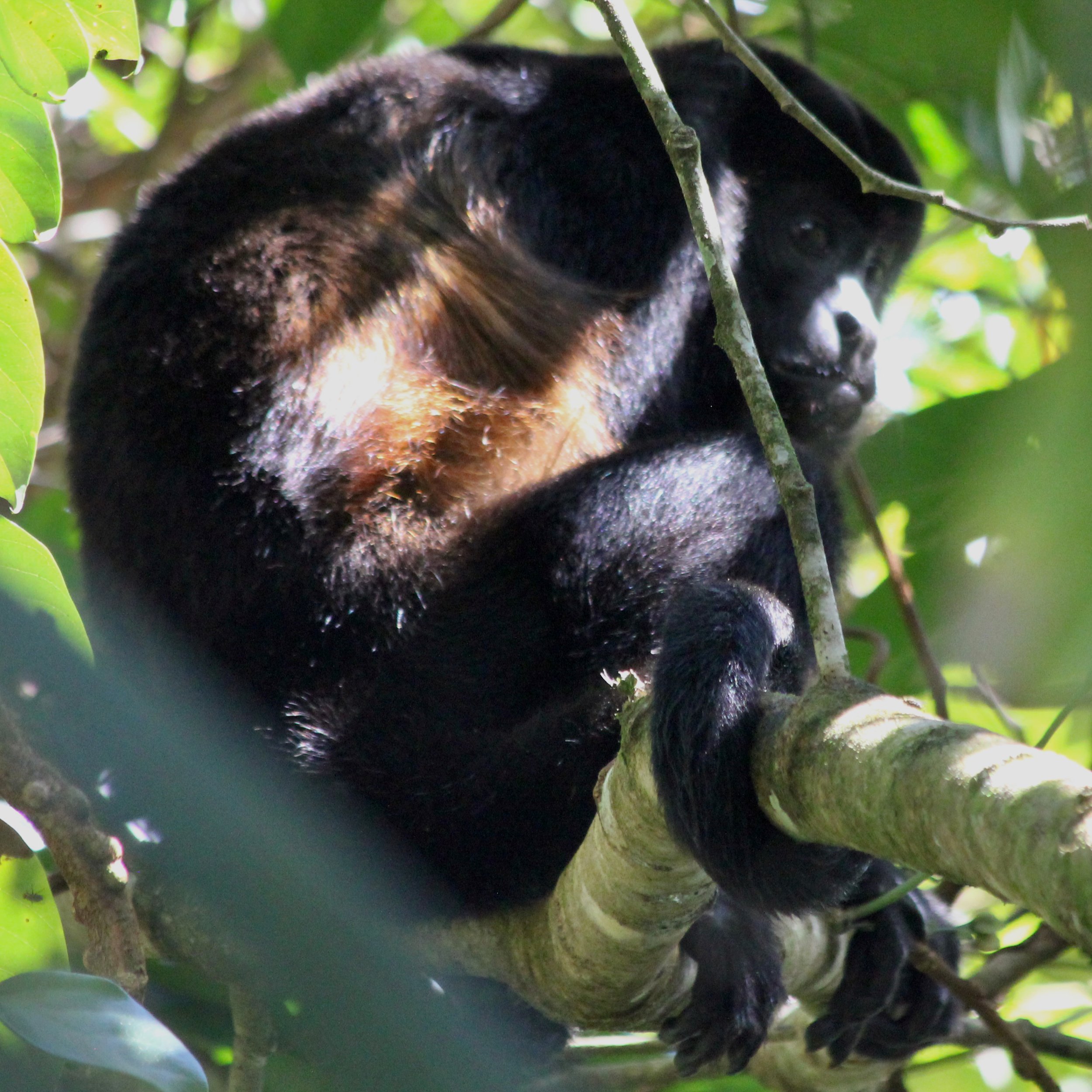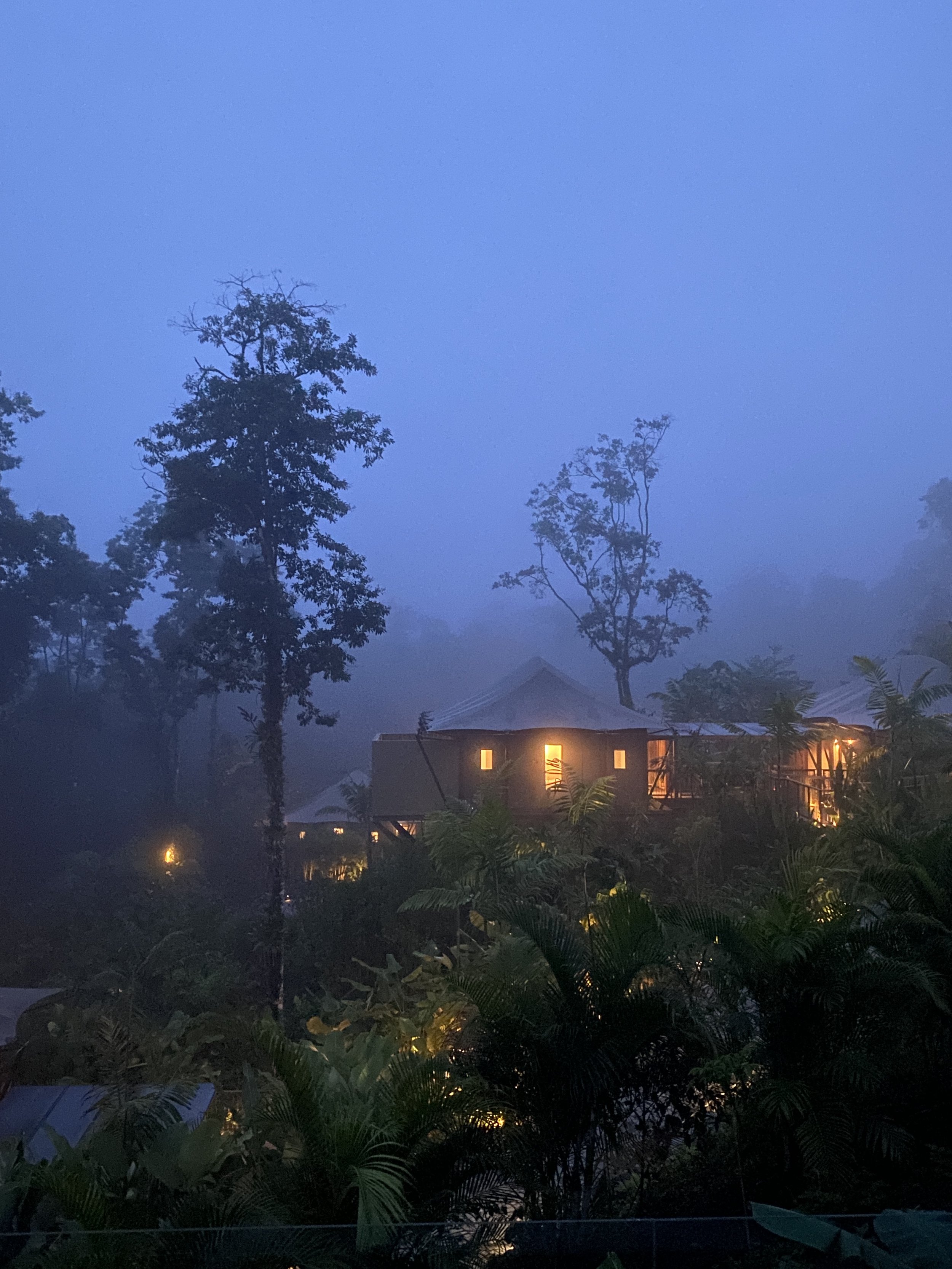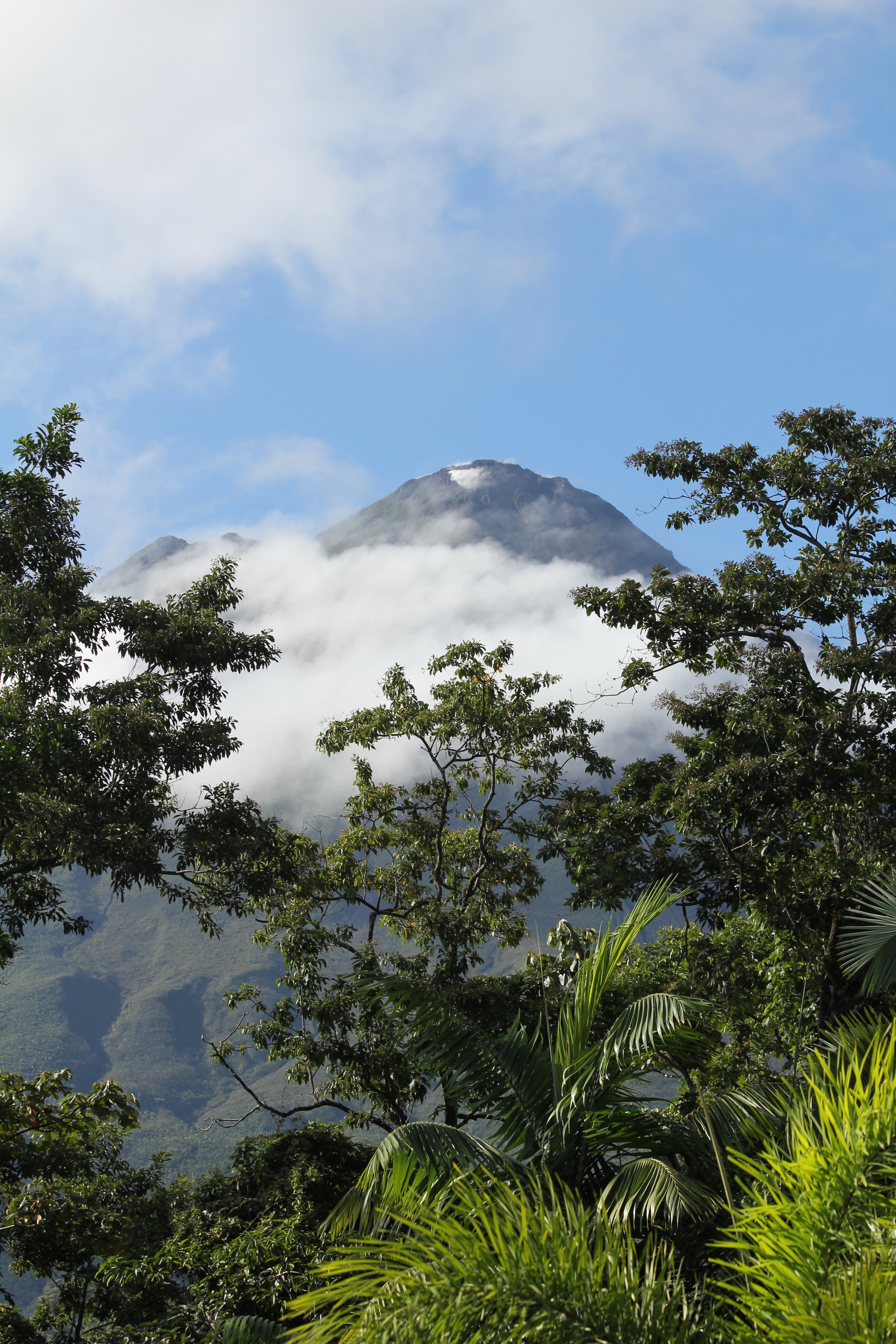Crowning Glory
Blissed out at Costa Rica’s spectacular Nayara Tented Camp.
Originally published in Travel + Leisure, March 2020



















WE’D BEEN SCANNING THE TREES ALL MORNING, searching for our elusive neighbor, Tony. A fellow guest had spotted him the day before, dangling by his nails from a branch, fast asleep. Juan Pablo Castillo, the lead naturalist at Costa Rica’s Nayara resort, clocked him in the same tree at sunrise. Safe to assume he was still nearby: Tony, a three-toed sloth, doesn’t get around much.
Juan Pablo was leading us on a hike through the wilder side of the resort—into a dripping wet ravine thick with guarumo trees, the sloth’s favored habitat; across an orchard of mangosteen and starfruit, planted by an eccentric Swiss expat years ago; and into the raw jungle that laps at Nayara like the tide at the shore.
We spotted toucans, iguanas, red-eye frogs, blue morpho butterflies, even a furry tarantula peeking out of its burrow. But no Tony. Nor any of the other sloths, named and unnamed, that dwell in and around Nayara. Eventually, necks sore from craning, we returned to the main lodge. That’s where we heard a rustle—and there on the path before us was Tony, moving very slowly on all fours. His fur was moist and green, as if he’d rolled in a pile of cut grass. (Sloths sleep so often that algae grow on their coats.) Twigs and leaves adhered to his back, and his tiny head lolled to and fro. He looked like a drunk Muppet crawling home from a raucous cast party.
For an eternity we watched Tony cross the path. When at last he reached the other side, he set about ascending a hundred-foot guarumo tree. For all I know he’s still climbing.
This is what Nayara is like every morning: Here in the wild heart of the Arenal region, nature comes at you from all directions. Orchids and heliconia seem to bloom as you watch. A simple walk to breakfast is soundtracked by the chatter of parrots, the thrum of hummingbirds, the hhhwwwaaammp of howler monkeys. That’s just on the property itself—beyond the gates, the rainforested expanse of Arenal Volcano National Park contains countless bird species, rivers and waterfalls, and the near-perfect cone of the park’s namesake.
In just over a decade, Nayara has evolved from a modest eco-retreat into one of Central America’s most assured resorts, with three properties spread over 62 acres, connected by footbridges and jungle pathways. The original Nayara Gardens was joined in 2014 by an adults-only resort, Nayara Springs. Last December saw the opening of the much-anticipated Nayara Tented Camp, whose 25 canvas-topped suites are scattered across a hillside above its sister properties.
It’s fair to say Costa Rica has nothing else like the Tented Camp. The guest suites were designed by Luxury Frontiers, the “experiential lodging” architects who also created Puku Ridge in Zambia and the new Camp Sarika at Amangiri in Utah. Floating on stilts among the treetops, these are tents in name only: fully climate-controlled, with sumptuous wood floors, king-size canopy beds, freestanding soaking tubs in the marble bathrooms, and a two-headed outdoor shower shaded by banana trees. Handloomed rugs, leather-strap chairs, and a steamer trunk reimagined as a fold-out bar allude to colonial-era safari lodges. Yet the effect is lighter, fresher, airier—not least because of the tents’ sheer size, and the wall of glass opening onto the private deck, where a volcanic spring-fed plunge pool hovers at a constant 100 degrees. From that lofty perch one can gaze across the canopy to the water’s source: the steep charcoal slopes of Mount Arenal, puffs of steam somersaulting off its conical peak.
“It was a beautiful accident,” owner Leo Ghitis says of his involvement with Nayara. The Colombia-born, Miami-based developer first visited Costa Rica in 2008 with his wife, Ruthy. Ruthy’s cousin Angelo—along with six other investors—had opened a rustic, 24-room hotel in the Arenal region a year earlier. Nayara had just 10 full-time employees at the time, and Angelo was struggling to make it work. He’d invited Ruthy and Leo to take a look, offer their thoughts. So the Ghitises flew down for the weekend. Though neither had prior hotel experience, both were well-traveled, and Ruthy had a sharp eye for design. The two fell in love with Nayara on the spot, and Leo bought out the other partners that very day.
The Ghitises—suddenly hoteliers—set out to learn the trade firsthand, crisscrossing the globe and gleaning advice from GMs, travel agents, editors, designers. Whatever tricks they picked up seemed to work: nine months after they opened their second property, Nayara Springs, T+L readers named it the top resort in Latin America in the 2014 World’s Best Awards. Since then Nayara has been upgrading at a rapid clip.
But of all the enhancements, the Tented Camp is the most ambitious. When the Ghitises acquired this mountaintop parcel, much of the land was bare—cleared by cattle ranchers a half-century ago, before conservation laws were in place. Landscape architect Matthew Flynn, tasked with “re-greening” the site, would ultimately bring in some 250,000 plants, all native to the rainforest, including hundreds of guarumo trees to expand Nayara’s sloth habitat up the mountain. While portions remain patchy and scrublike, it should take only a season or two before the vegetation grows in thick as jungle.
Leo and Ruthy were intent on creating something immersive, unexpected, and, given the rise of multigenerational travel, family-friendly. (The single-bedroom bungalows at Nayara Gardens are a bit small for families with older kids.) Inspiration struck during a trip to some of Africa’s elite lodges and tented camps. The Ghitises realized that “this sort of ultraluxe tent concept didn’t yet exist in Costa Rica,” says Leo. “And we wondered: Why not?”
Once the foliage grows in, the tents will offer more seclusion than the resort rooms down the hill. Fourteen of them can be linked via covered walkways to form a two-bedroom compound, ideal for the families who will surely be a key clientele. For larger groups, five multi-bedroom tents will open this summer at the crest of the mountain. By then the camp’s asado grill restaurant and a standalone spa should be up and running as well. Already bubbling away: six spring-fed thermal pools, cascading down the forested hillside.
But what you’re really here for is the enveloping green, and all that dwells within it. In the Hanging Bridges park my wife and I crossed ravines on swaying suspension bridges while spider monkeys leapt across the treetops, barely out of reach. On rainforest hikes we came upon armadillos, wild boar, dozing fruit bats, and a pair of curious coati (a raccoon-like mammal) sniffing around our picnic spot. We descended 500 feet into a misty canyon to reach the spectacular La Fortuna waterfall, where we swam in what felt like a water-park wave pool. It was the coldest, most delicious water I’ve ever swam in.
By our fifth day at Nayara we had run across Tony four times, in four different locations. He seemed to be very tentatively stalking us. As we loaded our bags into the van at checkout, my wife laughed and pointed skyward: there was Tony, dangling by dragon-like claws from a branch 100 feet up, munching on guarumo leaves, staring right back. •
